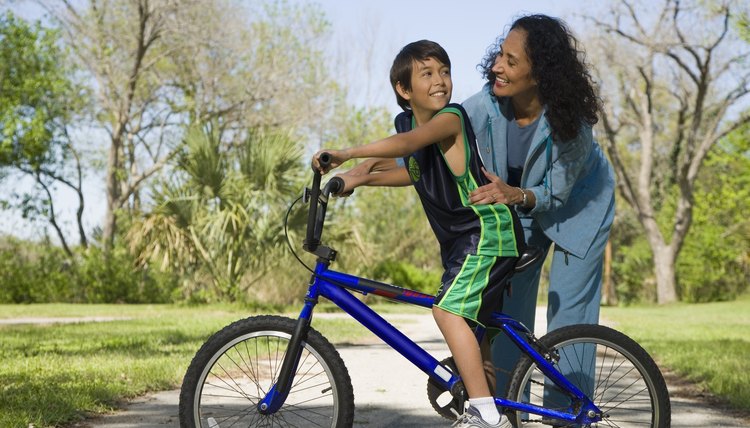How to Convert a Bike to Coaster Brakes

Converting a bike to have coaster brakes requires knowledge about the different parts of a bike and how they work with each other. Installing coaster brakes is a great way to teach beginners how to ride and balance properly. Also called pedal brakes, they stop the bike when the user rotates and pedals backward. You will need the right equipment and tools to replace the rear wheel and complete this project.
Disassembling the Bike
Gather everything you need in one place. Set the bike upside down on its handlebars and seat or put it onto a bike stand to keep it stable.
Disassemble from the outside of the sprocket and then move to the inner portion.
Remove the locknut and cone that secure the sprocket using the adjustable wrench. Take out the sprocket by twisting continuously until it is totally off.
Remove the axle nuts on the rear wheel and then move the wheel forward and let the chain slack. Remove the chain from the rear sprocket, axle bearings, rear wheel and brake pads.
Installing the Coaster Brake
Slide the coaster brake reaction arm onto the axle and then secure it. Put the first bearing beside the coaster brake.
Install the cluth assembly on the axle then place the brake pads on the clutch. Slide the intermediate bearing on the axle then place the axle into the wheel hub.
Position the sprocket, outer bearing and bearing cone and then secure the axle by tightening the locknut. Put the rear wheel back on the bike frame and then tighten the nuts on the axle.
Reattach the chain.
Testing the Coaster Brakes
Point the coaster brake reaction arm to the front of the bike by rotating the rear wheel.
Place the clip on the reaction arm to finish the conversion. Check that the clip is properly positioned to the bike’s frame.
Ride the bike and test how well the brakes react when you pedal backwards.
Tips
Using a coaster brake will prevent you from using a chain tensioner. You might notice chain slack after the coaster bike conversion, so check that the cog size and chainring are compatible. An adaptor will also help maintain proper tension on the chain for smooth and efficient rides.
Warnings
You might need to replace the wheel hub, sprocket and chain as you install new parts of various types and sizes, so an ample understanding of bike mechanics is necessary.
References
Writer Bio
Vanessa Arellano Doctor has more than 10 years of professional writing experience, specializing in business and finance, health and fitness and general interest subjects. She has been published in the "Financial Times," "European Banking News Network," "Entrepreneur," Urbanette.com and WealthBriefing Asia.
